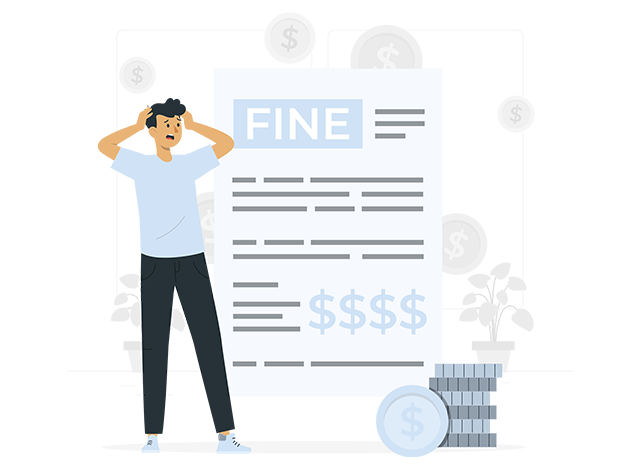Winding up an LLP means legally closing the LLP and liquidating its assets. It involves settling debts, distributing remaining assets, and ending the LLPs operations organizationally. The partners can do it voluntarily or through a court order in specific situations.

About Winding up of an LLP
Winding up of an LLP refers to the process of legally dissolving the business entity, terminating its operations, and distributing its assets. This process is essential when the business is no longer viable, or the partners decide to close the business. The winding-up process involves several steps to ensure that all debts, liabilities, and legal obligations are settled before the LLP is formally dissolved.
Document required for Winding Up – LLP
- Voluntary Winding Up: In this method, the partners of the LLP decide to wind up the affairs of the partnership voluntarily. This decision could be based on mutual agreement among the partners or for reasons specified in the LLP agreement.
- Compulsory Winding Up by the Tribunal: This mode is initiated by an external order rather than the LLP’s partners. The tribunal may wind up the LLP for reasons such as non-compliance with statutory requirements, inability to pay debts, or other grounds deemed sufficient by the law.
The LLP can be wound up through various methods, each with its own set of procedures and legal implications.
Documents required for winding up of LLP
- PAN card for identity proof
- LLP Agreement with any amendment (if any)
- The final statement of LLP with the latest Income Tax Return
- NOC from creditors
- Certification from auditor/chartered accountant as statements of LLP were true and correct
- Directors’ Affidavit
- Board resolution
- Indemnity bond
Procedure for winding up of an LLP by a Tribunal
The procedure for winding up an LLP by a Tribunal involves several steps to ensure an orderly and fair dissolution of the LLP. Here’s an overview of the process:

The process begins with filing a petition for winding up to the Tribunal. This petition can be filed by the LLP itself, creditors, partners, or, in certain cases, by the Registrar or by a person authorised by the Central Government.
Upon receiving the petition, the Tribunal will consider the reasons for winding up. If the Tribunal finds sufficient grounds per the LLP Act’s provisions, it will pass a winding-up order.


Once the winding-up order is passed, the Tribunal will appoint a Liquidator. The role of the Liquidator is crucial, as they are responsible for managing the entire winding-up process, including the liquidation of assets.
The Liquidator must publicly announce the winding up, inviting claims from creditors and instructing debtors to settle their dues.


The Liquidator will then proceed to settle the claims of creditors as prescribed by the law. This includes verifying the claims and deciding the order for the debts to be paid.
The Liquidator will liquidate the LLP’s assets to generate funds to pay off the LLP’s debts. This could involve selling off property, machinery, intellectual property, etc.


After paying off the debts. If there are any remaining assets, they are distributed among the partners of the LLP according to the agreement in the LLP deed or the LLP Act if the deed does not specify the distribution.
Once all debts have been paid, and the remaining assets have been distributed, the Liquidator will apply to the Tribunal for the dissolution of LLP firm. After ensuring that all procedures have been correctly followed, the Tribunal will pass an order to dissolve the LLP.


The order of dissolution issued by the Tribunal must be filed with the Registrar by the Liquidator within a specified period. The Registrar will then publish a notice declaring the LLP to be dissolved.
Procedure for Voluntary Liquidation Of LLP
The process of voluntary liquidation for a Limited Liability Partnership (LLP) involves several critical steps as outlined below:

-
Declaration of Solvency (DOS) : Obtain a declaration from most designated partners, verified by an affidavit, affirming the LLP’s ability to pay off debts.
-
Accompanying Documents : The DOS should be accompanied by audited financial statements for the last two years or since incorporation and a valuation report of assets by a registered valuer.
-
Resolution: Pass a resolution for voluntary liquidation and appoint an insolvency professional as the liquidator within four weeks of obtaining the DOS.
-
Creditors’ Approval: If the LLP has debts, creditors representing two-thirds of the debt value must approve the resolution within seven days.
-
Notification : Notify the Registrar and the Insolvency and Bankruptcy Board of India (IBBI) about the resolution within seven days.
-
Liquidation Proceedings : Liquidation is deemed to commence from the resolution date, subject to creditors’ approval.
The LLP must cease business operations from the liquidation commencement date except for actions beneficial to the winding-up process.
-
The LLP continues to exist until it is dissolved.
-
Appointment and Remuneration of Liquidator
-
Appoint an insolvency professional as a liquidator who meets specific eligibility conditions.
-
The resolution for appointment should include terms and conditions and remuneration, which is part of the liquidation cost.


The liquidator must prepare and submit various reports, including a Preliminary Report, Annual Status Report, minutes of consultations with stakeholders, and a Final Report as specified.
-
Make a public announcement within five days of the appointment, inviting stakeholders to submit their claims within 30 days.
-
The announcement should be published in newspapers with wide circulation and on relevant websites.


The liquidator verifies submitted claims within 30 days from the last date of receipt and may admit or reject them wholly or partially.
The liquidator is responsible for valuing and selling the LLP’s assets in an approved manner and mode, recovering dues, and realising unpaid capital contributions from partners.


-
Open a bank account in the name of the LLP ‘in voluntary liquidation’ to deposit all received monies.
-
Distribute the proceeds from the realisation to stakeholders within six months after deducting the liquidation cost.
These steps are structured to ensure a systematic and transparent process for dissolving the LLP while safeguarding the interests of creditors and stakeholders.
Frequently Asked Questions
-
What is winding up an LLP?
-
What are the types of winding up?
There are two ways in which a LLP may be wound up: by the LLP voluntarily (voluntary winding up), or by the court (compulsory winding up).
-
What are the steps involved in the compulsory winding up of an LLP?
The compulsory winding up of an LLP can be initiated by the Tribunal based on certain grounds, and it involves filing a winding-up petition, appointing a provisional liquidator, conducting investigations, and settling debts.
-
How is the final balance sheet prepared during winding up?
The liquidator prepares the final balance sheet after all debts are settled
-
How long does the winding-up process of an LLP usually take?
The duration of the winding-up process depends on various factors, such as the complexity of the LLPs affairs, the cooperation of the partners, and any legal complexities involved
-
Can LLP be closed before one year from the date of incorporation?
No, at least one year must have lapsed before closing a LLP voluntarily
